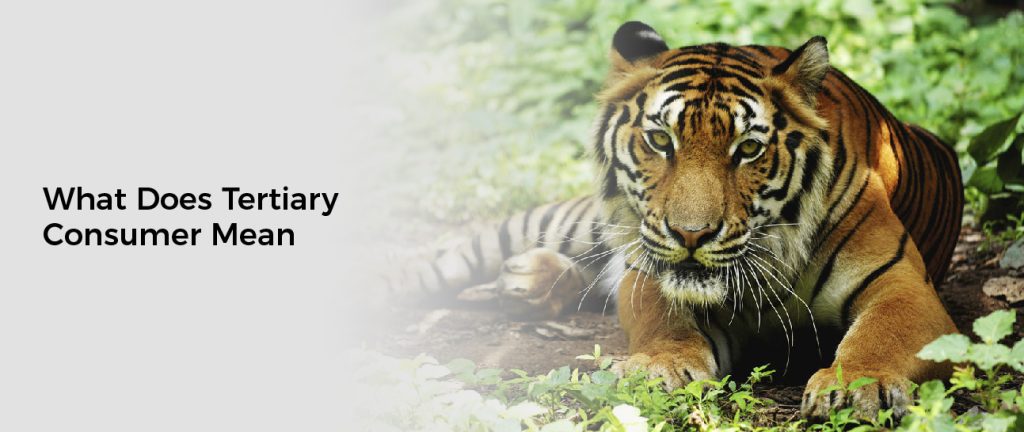Have you ever heard the term “tertiary consumer” and wondered, “What exactly does that mean?”. If so, then this blog post is for you, as we’re here to provide a comprehensive explanation of tertiary consumers in an easy-to-understand format with plenty of helpful examples to drive the point home. It is important to recognize that tertiary consumers play an important role in any ecological system — they not only affect the overall balance of the food chain.But they also play an important role in regulating populations by consuming large quantities of animals, plants, or other organisms at lower levels.
As such, understanding what tertiary consumers are and what kinds of species exist within this classification can help us better understand how vital these creatures are for our planet’s health and sustainability!
The Basic Terms of Natural Science
Primary Consumers are plants, insects, and some omnivores. They eat plants and other organisms to get the energy they need to survive. Examples of primary consumers include grasshoppers, squirrels, worms, earthworms, and ants.
Secondary Consumers are carnivores that eat both plants and animals. These examples include wolves, foxes, and big cats.
A tertiary Consumer is a carnivore that feeds on other carnivores. In many cases, a tertiaryconsumer is fully carnivorous, but a few omnivores are also classified as tertiary consumers.Some examples of tertiary consumers include whales, dolphins, seals, tiger sharks, moray eels, and bobcats.
Decomposers are bacteria and fungi that eat dead plants and animals. Depending on the type of decomposer, decomposers can be small organisms like mushrooms or large ones such as frogs, ants, and mice. The decomposer breaks down organic matter into simpler compounds, such as carbon dioxide, nitrogen, and water.
The Examples of Tertiary Consumer
1. Apex Predators
Tertiary consumers, also known as apex predators, inhabit the top trophic level in a food chain. These organisms play a crucial role in maintaining balance in the ecosystem. They also control the population of lower food chain species. Some of these species are omnivorous, and others are predatory.
Apex predators are usually found in terrestrial or aquatic environments. They have streamlined bodies with strong muscles and large claws. Their main diet is meat, and they often attack other animals. Depending on the type of animal they eat, they may be classified as primal consumers, quaternary consumers, or secondary consumers.
These creatures are the most dangerous predators on earth. They consume other animals, plants, or even humans. Because they have streamlined bodies, they are capable of running fast. When they die, their carcasses will be eaten by scavengers.
In marine environments, tertiary consumers include sharks, dolphins, jellyfish, and larger fish. Depending on the environment, these creatures may be exclusively carnivorous or omnivorous.
2. Animals
The tertiary consumer is the animal that is at the top of the food chain. This animal can be a carnivore or an omnivore. Sometimes they are called apex predators. Their diet can include a variety of animals from the primary and secondary trophic levels.
The food chain is a series of energy transfers from link to link. It is also a series of transfers of matter. For example, human beings consume plants and animal materials. Some plants, such as grasses, are producers. They provide a large amount of biomass. In return, they receive a small amount of energy.
The various animals consume other foods in the lower trophic levels. These include smaller mammals and birds. Occasionally, some of these animals will prey on the higher trophic level animals. If this occurs, the tertiary consumer will be the last to receive any energy.
3. Secretary Bird
The third example of a tertiary consumer is the secretary bird, which is found in Africa. This large raptor consumes a variety of prey items such as snakes, lizards, rodents, and eggs. They are important predators that help control small mammal populations and keep them healthy.
Secretary birds also provide an important food source for other animals, such as the honey badger and jackal, which prey on them. Their presence also helps to maintain ecological balance in their habitats by controlling rodent populations and keeping them from becoming too large and overgrazing vegetation.
4. Pythons & Boas
Pythons and boas are also examples of tertiary consumers as they feed on smaller vertebrates such as rodents, birds, and reptiles. They can also consume insects or other invertebrates if necessary. These large constrictor snakes help to control the populations of their prey, which helps maintain ecological balance in the areas where they are found. Pythons and boas can also serve as important food sources for other animals and birds of prey, such as owls and eagles.
5. Lions & Tigers
Big cats such as lions, tigers, and panthers are also examples of tertiary consumers. They feed primarily on large ungulates such as wildebeest, antelopes, and zebras but can also consume smaller mammals like hares and rodents.
Big cats help to control the populations of their prey and keep them at healthy levels, which in turn helps to maintain the ecological balance of their habitats. They also provide an important food source for other animals and birds of prey, such as vultures, jackals, and hyenas.
The Role of a Tertiary Consumer in an Ecosystem
The tertiary consumer’s role is to consume the secondary consumers. They are also known as top predators and feed on numerous species of animals, such as fish, birds, small mammals, and reptiles. In addition, tertiary consumers may also feed on plants or detritus.
The presence of tertiary consumers helps to maintain a balanced ecosystem by helping to regulate the populations of their prey. As tertiary consumers often feed on a variety of species, they can also increase ecosystem biodiversity by opening up niches for other animals and plants. In addition, their absence could lead to the overpopulation of some species and the imbalance of the food web that would follow. Tertiary consumers may also play a role in seeds dispersing and spreading certain diseases, depending on their dietary habits.
The Benefits & Drawbacks of Being a Tertiary Consumer
The benefits of being a tertiaryconsumer are that they can help keep their prey populations in check, increase biodiversity and disperse seeds. They also play an important role in the food web as they serve to connect different trophic levels. Being a tertiary consumer can also protectthem from predators, as they are usually at the top of the food chain.
The drawbacks of being a tertiaryconsumer include their increased vulnerability to environmental factors, such as pollution and habitat loss, due to their larger size and higher trophic level. Tertiary consumers also tend to have limited food sources due to their specialized diets, which can make them more vulnerable when prey populations decline.


